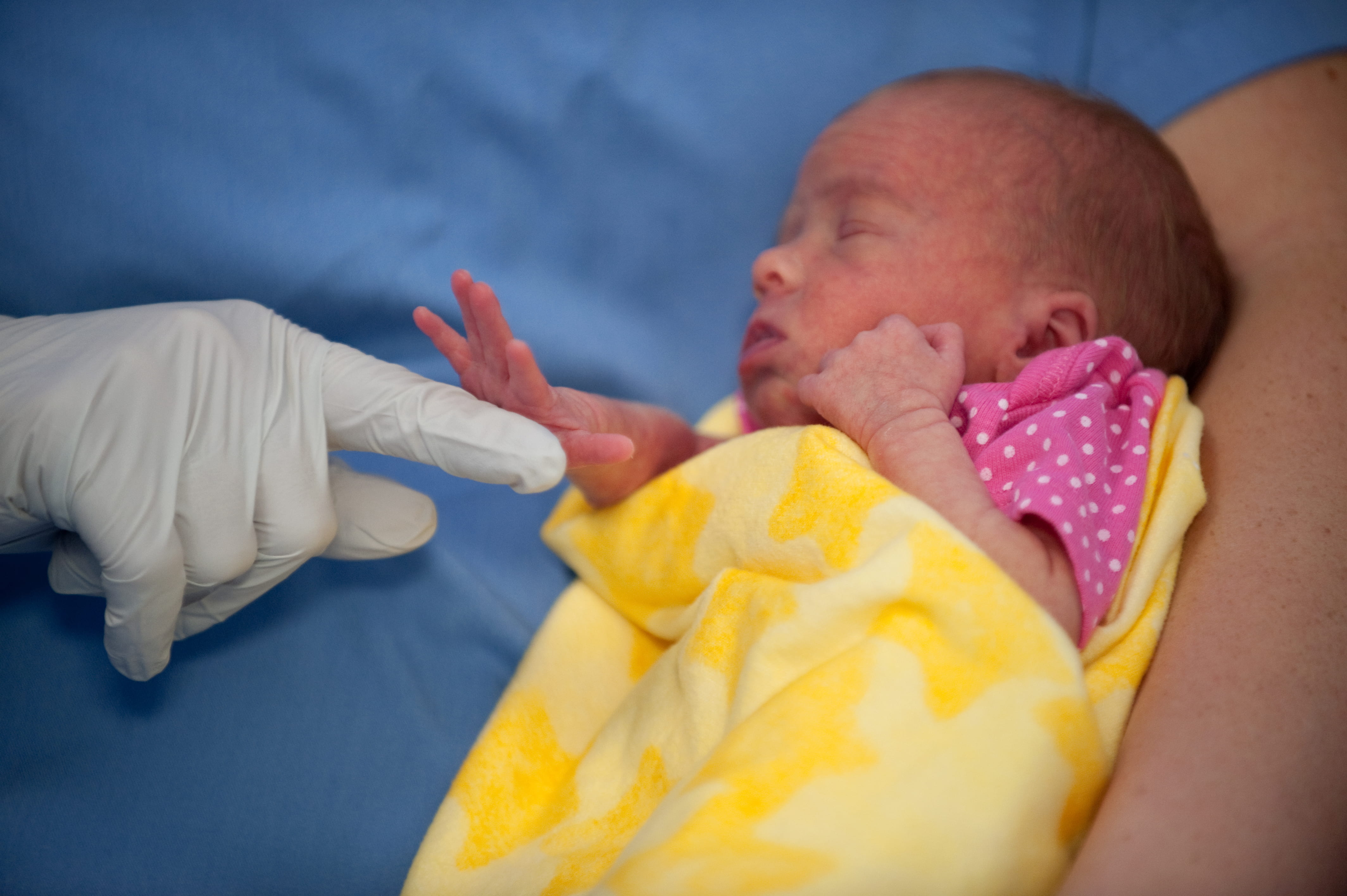Keeping hospitals healthy

Linda Dickey, a nurse and director of epidemiology & infection prevention at UC Irvine Medical Center, wears a small but significant yellow badge on her white coat. It’s proof that she’s current on her influenza vaccine. It’s also a symbol of the hospital’s commitment to fighting infectious diseases.
In 2009, when fears were running high about the bird flu virus, the facility began requiring that employees either get a flu shot or sign a written declination and wear a mask in medical areas. The mandatory policy was designed to protect patients: “You don’t need the flu on top of having a heart attack,” Dickey says.
The program worked. Compliance, which had been voluntary, jumped from about 60 percent — the national average for hospitals — to more than 90 percent. “It’s a big win for us,” Dickey says. “Now other hospitals are following our lead.”
Mandatory vaccinations are just one of many measures the medical center’s infection prevention team has enacted to stop the spread of hospital-acquired infectious diseases — a major public health problem.
“More people die from healthcare-related infections in this country than breast cancer, but you don’t hear as much about it,” Dickey says.
Such infections cause about 100,000 patient deaths in the U.S. every year, according to the Centers for Disease Control & Prevention.
“Could they [infections] — should they — be less? Absolutely,” Dickey says. “There’s a lot that can be done to prevent them.”
Patients can contract diseases through routine care, surgery or the use of medical devices. The most common, reports the CDC, are central line-associated bloodstream infections, catheter-associated urinary tract infections and ventilator-associated pneumonia.
Central lines deliver medicine, fluids and food to patients through a tube placed in a large vein near the center of the body. UC Irvine began working on ways to stem the potentially deadly infections linked to central lines several years ago.
“We looked at the process of inserting the catheter and found a lot of variation,” Dickey says.
The infection prevention team collaborated with the anesthesia department to train UC Irvine physicians to follow a checklist of precautionary measures — such as washing their hands and donning a full gown, gloves and a mask — when inserting or removing the devices.
“When you do all of these, you lower the risk of infection,” says Dickey, who joined UC Irvine 10 years ago.
Her group also strives to keep pathogens from contaminating the hospital environment. Disease-carrying organisms such as Staphylococcus aureuscan survive on surfaces for days or weeks. They can live on doorknobs, counters, elevator buttons, phones, medical devices or a doctor’s white coat. Healthcare workers can transmit them to patients via contaminated hands or gloves.
To compound the problem, studies have shown that only about 50 percent of surfaces targeted for cleaning in healthcare settings are adequately wiped down.
Efforts to improve sanitation at the medical center include the equivalent of a white-glove test: Supervisors apply a fluorescent marker to surfaces, then check after cleaning to make sure the dye has been removed.
“Previously, they would look around and give the space a visual check, but there was no swabbing of surfaces or other ways to assess cleanliness,” Dickey says. “This method is more objective and quantifiable for improvement.”
She says there’s a tight-knit group of infection prevention workers at other University of California facilities and hospitals nationwide who share best practices. But it’s a growing challenge.
“The organisms are getting more resistant,” Dickey says. “When you see research on diseases that are transmitted easily from person to person — especially those that travel through the air — it’s scary to everyone. Right now, we have effective antibiotics to fight bacteria. Our concern is that someday we won’t have anything to treat them with.”
She serves on the national Facility Guidelines Institute committee of architects, engineers and project managers to help revise the organization’s Guidelines for Design & Construction of Health Care Facilities. Ventilation, dust control, the accessibility of soap dispensers, the placement of hand-washing sinks — many factors contribute to infection prevention even before a hospital opens its doors.
Dickey also collaborated with UCI Design & Construction Services to develop an infection control plan for UC Irvine Douglas Hospital, which opened in 2009.
“There isn’t an area of the hospital related to patient care where infection prevention does not apply,” she says. “We’re involved in all levels of the organization.”
Although Dickey doesn’t have the satisfaction of treating patients one-on-one, she likes doing work that benefits all of them.
“At the end of the day, you know what you do definitely makes a difference in patients’ lives,” she says.
Originally published in ZotZine Vol. 4, Iss. 6